The exiled earl and the soon-to-be saint
Published in Anglo-Norman Ireland, Features, Issue 5 (September/October 2016), Volume 24HUGH II DE LACY AND THE ALBIGENSIAN CRUSADE
By Paul Duffy
This year marks the 800th anniversary of the foundation of the Order of Preachers, also known as the Black Friars or, more commonly, the Dominicans. St Dominic is credited with popularising that most Irish of devotions the Rosary, and a multitude of towns in the country can boast a Dominick Street, a Black Abbey or Black Friary. While the Dominican order was not to arrive on Irish shores until 1224, the 800th jubilee has a particular resonance owing to a little-known Irish connection to the foundation of the order in 1216. As Dominic toiled in southern France during the Albigensian Crusade, he was aided in his work by the protection and patronage of the leader of the crusade, Simon V de Montfort. Dominic also received support from another captain of the crusade, his neighbour, the lord of Castelnaudary and Laurac—known to Irish history as the exiled earl of Ulster, Hugh II de Lacy.
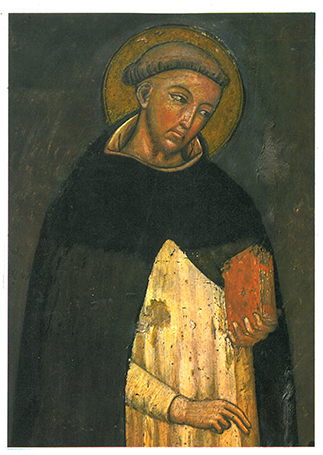
Above: Dominic de Guzmán—his Order of Preachers arose in direct opposition to Catharism.
Established by Dominic de Guzmán in the early thirteenth century in the Languedoc region of southern France, the Dominican order arose in direct opposition to the heresy known today as Catharism. Dominic exhorted active preaching and a life of poverty and asceticism, and promoted lifelong learning in his adherents. His approach was in many ways a response to the travelling Cathar preachers known as perfectii. The Dominicans were the first of the mendicant orders to arrive in Ireland, establishing their initial foundations in Dublin and Drogheda in 1224.
In the early thirteenth century Languedoc comprised large parts of the modern French regions of the Midi–Pyrénées, Languedoc–Roussillon and Provence. Politically it was a complicated patchwork of counties, over most of which Raymond VI, count of Toulouse, and Raymond-Roger Trencaval, viscount of Béziers–Carcassonne, exercised varying degrees of control. Distinct from the northern French kingdom, Languedoc shared linguistic, cultural and commercial ties with Italy and the Spanish proto-states south of the Pyrenees, notably Aragon and Navarre. The tenuous nature of the counts’ control over a trade-based, urbanised society had facilitated the appearance of ‘municipal republics’ run by town consulates elected from the merchant classes. Perhaps the most distinctive feature of Languedocian culture was the Occitan language (langue d’oc). Through the poetry of the troubadours, Occitan had given rise to that most characteristic of medieval ideals—courtly love.
In Languedoc, this dynamic region of political devolution, the Cathar faith found fertile soil in which to take root and flourish. The heresy had percolated across southern Europe over the previous two and a half centuries, developing from the dualist belief of Bogomilism in the Balkans. Dissemination followed trade routes through Dalmatia and northern Italy, arriving at Toulouse c. 1000. Although a Christian faith, Catharism ran contrary in many respects to Catholic doctrine, regarding the earth and all things therein as intrinsically evil. The Cathar faith, and in particular the perfectii (members of an ascetic, initiated élite), engaged the common people through the eschewal of riches, extravagance and earthly pleasure.
In the later twelfth century Catharism was showing signs of advanced organisation, with Cathar bishops at Albi, Carcassonne, Toulouse and possibly Agen. The Cathars of Languedoc were labelled ‘Albigensians’ by the French to the north, who identified them with the town of Albi, where the heresy was reported to be very strong.
Despite increasing papal pressure on the meridional lords, there was no serious move to suppress the heresy by the local aristocracy, many of whom were living openly as Cathars themselves. It was the assassination of the papal legate Pierre de Castelnau outside Saint-Gilles following the excommunication of Raymond VI in 1208 that precipitated the calling of the crusade. The assassin was identified as a member of the count’s court and a crusade against the heretics in Languedoc was immediately preached by Pope Innocent III.
Dominic, however, had already been on the ground in Languedoc for several years, combating the heresy through preaching missions and public debates and discourses held within the towns of southern France. In 1206 he established a monastery of nuns for converted female Cathars. By 1215 he was operating from a house in the regional centre of Toulouse, where the majestic Dominican ‘convent of the Jacobins’ was later built (c. 1230).
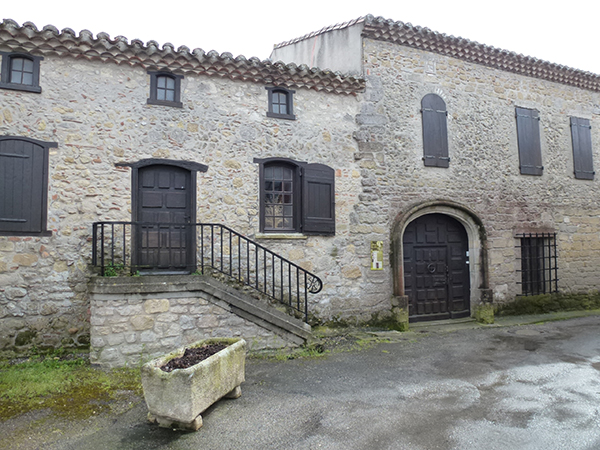
Above: The house at Fanjeaux where Dominic lived during his preaching missions in Languedoc—10km south-west of Hugh de Lacy’s town of Laurac.
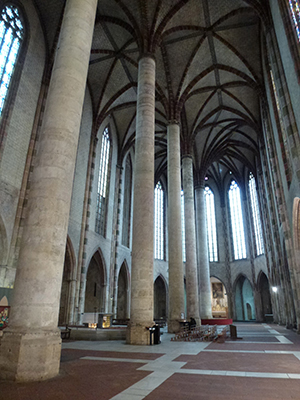
Above: The Dominican convent of Les Jacobins, Toulouse, known as the ‘jewel of Occitan Gothic architecture’, founded c. 1230. Dominic had previously operated from a house in Toulouse from 1215.
Exiled earl
Following Hugh de Lacy’s participation in a failed, Capetian-backed revolt against King John in 1210, John led an army of unprecedented size against him in Meath and Ulster. Despite apparent assurances that aid was to be imminent from France, John’s army swept the board in Ireland with little in the way of opposition. Hugh’s brother, Walter de Lacy, submitted to the king as soon as he landed at Wexford and, disavowing his brother, he accompanied the royal army as it progressed through Meath, capturing Trim. Despite murderous odds, Hugh elected to resist the royal army of c. 6,000 at Carrickfergus, manned by a few hundred of the earl’s adherents. He managed to escape the night before the castle’s fall, and sailed from the pages of Irish history for a decade.
Following a detour to Scotland, it is likely that Hugh sailed for Normandy and took refuge at Evreux, a town with strong associations both with the de Lacy family and with Fore Abbey in Westmeath. From Evreux it is logical that Hugh would have sought an audience with his co-conspirator, Philip Augustus, Capetian king of France, at Paris.
Philip Augustus was in the process of implementing a wide-ranging programme of castle-building throughout the Capetian kingdom and had just completed the castle of the Louvre in the centre of his capital. A formidable strategist and statesman, he had succeeded in taking Normandy from the Plantagenets and, as the nominal chief of the Albigensian Crusade, he was to greatly expand the size of his realm with the annexation of Languedoc. Hugh’s presence in the city at this time can be inferred from the fact that the bishop of Paris was at that very moment recruiting a relieving force to participate in the Albigensian Crusade, then under way in Languedoc. Hugh appears in the documentary sources in the south of France for the first time in spring 1221, immediately after the arrival of the bishop’s contingent at Carcassonne. Within a few short months de Lacy had risen through the crusading ranks and through force of arms and military brilliance had won lands and a title—lord of Castelnaudary and Laurac.
St Dominic and Hugh II de Lacy
The captain of the Albigensian Crusade, Simon de Montfort, was responsible for much of the traction gained by Dominic’s preaching mission in the early years of the crusade. Hugh de Lacy was also instrumental in supporting Dominic during the period prior to papal approval. Three documents from the cartulary of the Dominican order in Rome record grants of land made to Dominic by de Lacy from 1213 to 1218. In May 1213 de Lacy made a donation of the farmstead of Villenouvette to Dominic and his establishment of Prouille. A further grant followed in June 1214, with the donation of ‘the market place of Agassens at Payra-sur-l’Hers’ with all of its ‘appurtenances, men, lands (cultivated and uncultivated), waters and all rights pertaining thereto’. This grant was reconfirmed in February 1218 at Castelnaudary, two months after Dominic had asked de Montfort to safeguard his foundations at Prouille and Saint-Romain. Prouille was the first establishment founded by Dominic and was intended to bolster his preaching mission in Languedoc. Prouille comprised a community of converted Cathar women pre-dating the Dominican order that was confirmed by Pope Honorius III in 1216. It is clear from these donations and from Dominic’s visit to Castelnaudary in 1217 that de Lacy and the future saint were well acquainted.
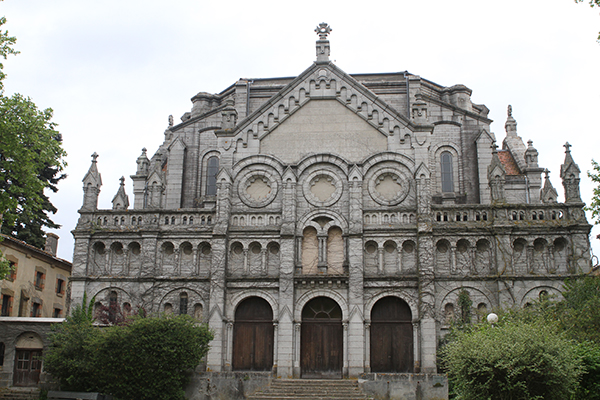
The Dominicans in Ireland
In the year that Dominic died, 1221, the crusaders suffered a reversal of fortune with the death in battle of Simon de Montfort. Meanwhile, Hugh de Lacy, exiled earl of Ulster, was forced to return to England to seek terms with King John’s successor. In the same year the Dominican friar Gilbert de Freynet and thirteen companions travelled to England with the intention of establishing a chapter. In the company of Peter des Roches, they travelled to Canterbury, where the archbishop, Stephen Langton, was residing. Langton was apparently so taken with their preaching that he instantly gave them permission to set up chapters in London and Oxford. The fact that the Dominicans were the preaching arm of the Albigensian Crusaders must have helped their cause, given that the archbishop’s brother, Walter Langton, had spent at least seven years on the crusade in the company of Hugh de Lacy.
In 1224, a few months after de Lacy returned to Ireland, the first Irish Dominican chapters were established in Dublin and on land in Drogheda, a town with strong ties to the de Lacys. The idea of a connection between the two events is tantalising. The establishment of a Dominican chapter at Drogheda is associated with Lucas de Netterville, archbishop of Armagh, an Englishman appointed by Henry of London. The invitation of the Dominicans to Ireland has been interpreted in the context of Henry of London’s policies of reform. What has been overlooked in this context is the connection between the de Nettervilles and the de Lacys, who had links not only in Ireland but also in Herefordshire.
A de Feypo deed of 1220, which was witnessed in Hereford by, among others, Lucas de Netterville, shows that de Netterville was in England at roughly the same time as the Dominican delegation. It has been proposed that the reason for the presence of the archbishop of Armagh in Hereford in 1220 was that he was on his way back to Ireland following his consecration by Stephen Langton at Canterbury. It seems that de Netterville had actually spent three years in England at this time, much of it with the monks in the de Lacy abbey of Llanthony. Could it be that Hugh de Lacy, acquaintance of Dominic, was responsible for implanting the first chapters in Ireland?
This intriguing suggestion is undermined, however, by the fact that, once reinstated to his earldom in Ireland, Hugh de Lacy did not establish any known Dominican foundations, instead favouring a Franciscan foundation at his caput of Carrickfergus.
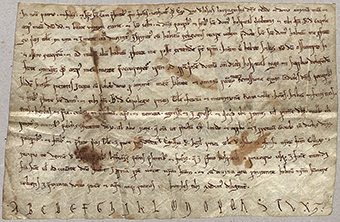
Above: De Lacy’s undated grant to the Hospitallers of Toulouse. (Archives Départementales d’Aude)
Though he scrupulously kept his distance from the violence and politics of the crusade, Dominic was very much a part of the struggle against Catharism, and de Lacy’s grants may have been more to do with dutiful compliance with the broader crusader mission than with a spiritual affinity for Dominic and his mission. One further document survives, however, detailing a grant of a very different character made by de Lacy in Languedoc. This undated manuscript contains the following submission made by de Lacy to the Grand Priory of the Order of St John of Jerusalem (Hospitallers), Toulouse:
‘I would like to receive the habit of the order, I promise myself the habit of the aforesaid holy house and I claim what is about to be received and I declare myself, on account of that entering, to be able to take up no other habit: but if it should come about that, with the habit not yet taken up, my body should be taken by death, I wish and beseech that it be carried to the cemetery of the aforementioned hospital’.
De Lacy substantiated this personal avowal with a further grant of
‘… the jurisdiction and the protecting of Renneville, namely its men and women, lands, vegetation, meadows cultivated and uncultivated, waters and groves, exit and entrance, and whatever pertains or ought to pertain there, with absolutely nothing from all the aforesaid things to be retained by me whether by my lordship or by any other right’.
The emphatic nature of this grant may hark back to a previous connection between Hugh and the Hospitallers, illustrated in his founding of the Castleboy Hospitaller preceptory in Armagh c. 1198. There is also a suggestion that he may have founded a Hospitaller preceptory at Templepatrick in Antrim following his reinstatement as earl in 1227.
Dominic was canonised in 1234 under the authority of Pope Gregory IX. This was within de Lacy’s lifetime and it is curious to reflect on how this news would have been received by de Lacy. Whatever the truth may be—committed patron and defender of the Dominicans or dutiful crusader—de Lacy’s aid to the nascent Order of Preachers in Languedoc was a significant contribution to the founding of the order and is deserving of some reflected commemorative glow from the Dominicans’ 800th jubilee celebrations.
Paul Duffy is director of the not-for-profit initiative Grassroots Archaeology.
FURTHER READING
D.J.F. Brown, Rising and falling in Angevin Ireland: the career of Hugh II de Lacy, 1186–1242, first earl of Ulster (Woodbridge, 2016).
P. Duffy, T. O’Keeffe & J.M. Picard (eds), From Carrickfergus to Carcassonne—the epic deeds of Hugh de Lacy and the Albigensian Crusade (Tourhaut, 2016).
















